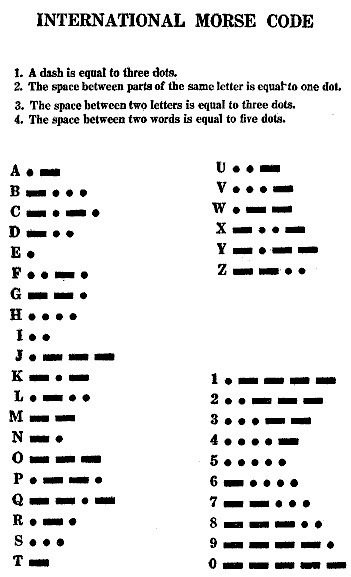International Morse Code
Morse code is a method of transmitting information as a series of clicks or “on-off” tones that can be understood by a skilled listener or observer. The International Morse Code encodes the basic Latin alphabet, some extra Latin letters, the Arabic numerals and a small set of punctuation and procedural signals (pro-signs) as a standardized sequence of short and long signals called “dots” and “dashes”.
Each Morse code symbol represents either a text character (letter or number) and is represented by a unique sequence of dots and dashes. The dot duration is the basic unit of time measurement in code transmission and the dash duration is three times the duration of a dot. Each dot or dash is followed by a short silence, equal to the dot duration. The letters of a word are separated by a space equal to three dots (one dash) and the words are separated by a space equal to seven dots.
To increase the speed of communication, the code was designed so that the length of each character in Morse is approximately inverse to its frequency of occurrence in English. For example, the letter “E”, which is the most common letter used in the English language, has the shortest code, a single dot.
